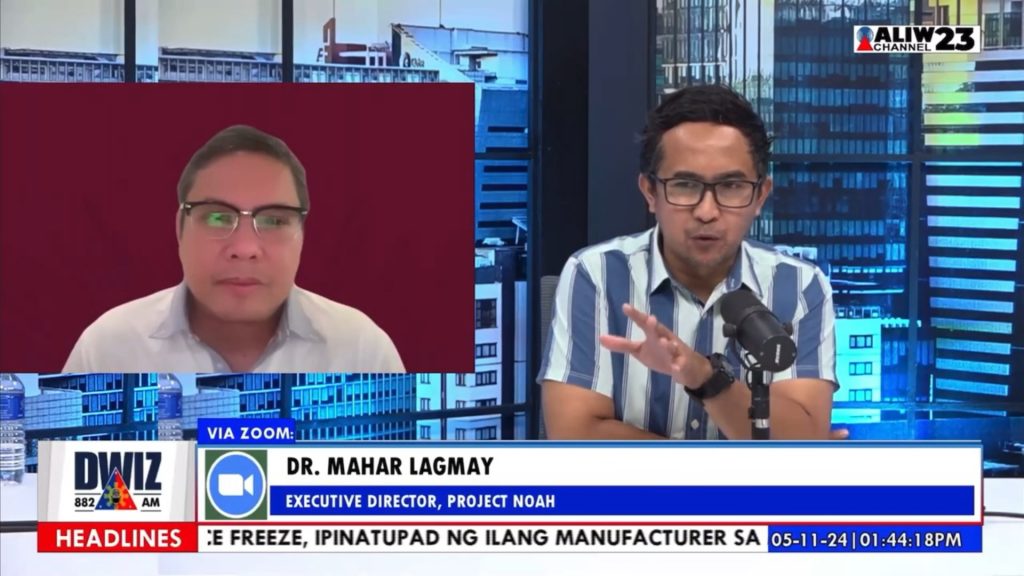On May 11, 2024, the UPRI was invited to discuss on DWIZ 882’s El Pueblo Publico with Ryan Lao about Flood and La Niña. The U.N. had declared that global warming is giving way to a new period known as global boiling, with greatly accelerated levels of climate change and this has been correlated with the intense La Niña that is expected. UPRI Executive Director Dr. Mahar Lagmay explained how the increased heat causes greater and more frequent hazards such as typhoons and heat waves, including the hottest year (2023) recorded since the last 120,000 years. This is why it is important to take this issue seriously, and why the renaming of global warming to global boiling is important—it is to alarm people to take action. In light of global boiling, we not only get stronger El Niño but an equally stronger La Niña which intensifies rains and exacerbates the wet season in the Philippines come June, July, August, and September. This results to more violent storms, landslides, storm surges, and floods.
One of the services provided by UPRI and NOAH Center is the identification of hazardous areas within the Philippines. Dr. Lagmay explained that it is actually easy to check if a particular location is potentially hazardous or at risk from hydrometeorological hazards using the NOAH website. With this information, one can understand the hazards within one’s neighborhood, identify dangerous areas, and know where to evacuate safely. The ability to model and predict these hazards are made possible with the use of up-to-date technology.
 Screenshot of the Facebook Live video from DWIZ 882’s Facebook page
Screenshot of the Facebook Live video from DWIZ 882’s Facebook page
With the coming La Niña, it was asked if an intensification of preparations by the government will be required, to that Dr. Lagmay answered: “Preparations should have been started the previous year rather than waiting until the rainy season to begin preparation.” It is also important to continue the work afterwards, as people are often quick to forget catastrophic events and are caught unaware by the same hazard several times.
Currently, warnings are highly generalized and disseminated only to a regional level. These warnings are inadequate and can cause the “cry wolf effect” to people living in the region are repeatedly warned of floods but never experience one in their specific barangay. UPRI-NOAH is able to create hazard-specific, area-specific, and time-bound warnings which will be useful during the La Niña season.
